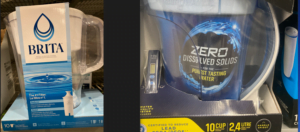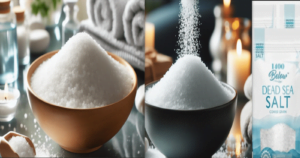Water is essential for life, and the quality of the water we consume can have a profound impact on our health and well-being. Today, we’re here to explore two common purification methods: filtration and distillation. While both aim to provide us with clean, safe drinking water, they do so through distinct processes, each with its own set of advantages and considerations. Join us as we delve into the nuances of filtered water and distilled water, ultimately seeking to understand which option best aligns with our individual needs and preferences.


Filtered Water
Filtered water refers to groundwater or tap water that has undergone a meticulous process aimed at eliminating impurities, as well as a range of both physical and chemical contaminants. Filtered water, the type most commonly available in grocery stores, is typically sourced from municipal tap water. This water undergoes a filtration process utilizing carbon filters to remove chlorine, which greatly improves its taste. At times, a micron filter is also employed. After this filtration, the water is subjected to Ozonation and then bottled for sale.
OZONATION:
Ozonation is a water treatment process that involves the infusion of ozone, a highly reactive form of oxygen (O3), into water. This is typically done to disinfect and purify the water by eliminating or reducing various types of contaminants. Ozone is a strong oxidizer that instantly neutralizes biological matter, such as bacteria, viruses, and parasites, and has stronger disinfectant properties than chlorine.
During the ozonation process, ozone gas is introduced into the water. The ozone molecules react with organic and inorganic compounds, effectively destroying bacteria, viruses, algae, fungi, and other microorganisms. Additionally, ozone can oxidize and decompose substances like organic pollutants, iron, manganese, and certain chemicals.
Ozonation has several advantages in water treatment:
- Effective Disinfection: Ozone is a strong disinfectant, more potent than chlorine, and can kill a broader spectrum of microorganisms.
- No Harmful Byproducts: Unlike chlorine, which can produce potentially harmful disinfection byproducts (DBPs), ozone does not form significant DBPs, making it a safer option for drinking water treatment.
- Taste and Odor Removal: Ozone can effectively remove unpleasant tastes and odors from water, particularly those caused by organic compounds.
- Color and Turbidity Reduction: Ozone can aid in reducing the color and turbidity of water by breaking down organic compounds responsible for these issues.
- Environmental Considerations: Ozone breaks down into oxygen, leaving no harmful residual chemicals in the water. It is considered environmentally friendly.
However, it’s important to note that ozone is not a long-lasting residual disinfectant, meaning it doesn’t provide long-term protection once it’s introduced into the water. Therefore, in many water treatment systems, a secondary disinfectant like chlorine or chloramine is often used to maintain a residual level of protection as water travels through distribution systems. Essentially, filtered water shares many similarities with spring water. It originates from a “natural” source, undergoes limited filtration, and is subsequently packaged and transported for sale.
ways in which filtered water can be obtained:
- Faucet Filters: Using attachments or systems that fit directly onto your tap to filter tap water.
- Pitcher Filters: Pouring tap water into a pitcher with an integrated filter.

pitcher filter
- Under-Sink Filters: Installing filtration systems under your sink to treat tap water at the point of use.

under the sink water filter
- Whole-House Filters: Implementing filtration systems that treat water for your entire home at the point of entry.

whole house water filter I use at home
- Reverse Osmosis Systems: Employing specialized systems that use a semipermeable membrane to filter out impurities from tap water.
- Countertop Filters: Placing standalone filtration units on your countertop and connecting them to your faucet.
- Gravity Filters: Using gravity to pass water through a filter, often employed in portable camping and outdoor settings.
- Bottled Filtered Water: Purchasing commercially bottled water that has undergone filtration before packaging.
- Natural Springs: Collecting water from natural springs, which often undergo natural filtration as water flows through rock layers.
- UV Purification: Employing ultraviolet (UV) light to disinfect and treat water, often in combination with other filtration methods to remove particles.
Each of these methods has its own advantages and may be chosen based on factors such as water source, desired level of filtration, and convenience.
Natural methods you can use to filter water.
- Boiling: Boiling water is one of the oldest and most effective methods to kill pathogens and bacteria. Bring the water to a rolling boil for at least one minute, then allow it to cool before drinking.
- Sand and Gravel Filtration: Create a makeshift filter by layering clean coarse sand and gravel in a container. Pour water through this filter, and it will help remove larger particles and sediments.
- Activated Charcoal: Activated charcoal is a highly porous material that can adsorb impurities from water. You can make a simple charcoal filter by placing activated charcoal in a container and pouring water through it.
charcoal use to filter water

- Cloth Filtration: Use tightly woven fabric like cotton or cheesecloth to strain out larger particles from the water. This method won’t remove bacteria or viruses, but it can help with sediment.
- Clay Pots: Unglazed clay pots can be used as a natural filter. Water seeps through the tiny pores in the clay, leaving behind impurities. However, this process is slow and might not remove all contaminants.
- Ceramic Filters: Ceramic filters have fine pores that can remove bacteria and protozoa. They are commercially available or can be handmade using clay.
- Sunlight (SODIS): Solar water disinfection (SODIS) is a natural way to kill pathogens. Fill clear plastic bottles with water and leave them in direct sunlight for 6 hours. The UV rays kill bacteria, viruses, and parasites.
- Plants: Certain plants can help filter water due to their natural filtration abilities. The roots of plants like reeds and cattails can trap and remove pollutants from water.
- Bio-sand Filters: These are made from a concrete container with layers of sand, gravel, and sometimes charcoal. They effectively remove bacteria, protozoa, and suspended solids.
- Moringa Oleifera Seeds: Crushed seeds from the Moringa tree can help clarify water by causing impurities to clump together, making it easier to remove them.

moringa Oleifera Seeds
- DIY Slow Sand Filter: This is a larger-scale project but very effective. It involves creating a container with layers of sand and gravel through which water is allowed to percolate.
- Bamboo Charcoal: Bamboo charcoal is known for its porous structure, which can adsorb impurities. Crushed bamboo charcoal can be used as a filtration medium.
Considerations.
Remember that while these methods can help reduce contaminants, they may not always make water completely safe to drink, especially if it’s contaminated with harmful chemicals or heavy metals. For truly potable water, it’s advisable to combine natural filtration methods with more advanced techniques or use commercially available water purification systems when possible.
Distilled water
Distilled water is water that has undergone a process called distillation to remove impurities and minerals. This process involves heating water to create steam, which is then collected and condensed back into liquid form. The impurities, such as minerals, salts, and other dissolved substances, are left behind in the original container.
The resulting distilled water is essentially pure H2O, as most of the contaminants have been removed. It is free from minerals, ions, and other substances that may be present in regular tap water. This makes it suitable for various applications where purity is important, such as in laboratory experiments, medical procedures, and some industrial processes.
It’s important to note that while distilled water is considered very pure, it lacks minerals that can be beneficial for human health. Some minerals in water, like calcium and magnesium, can contribute to your daily intake of essential nutrients. Therefore, drinking distilled water exclusively for extended periods may not be recommended for maintaining a balanced diet.
Overall, distilled water is a valuable tool in many industries and scientific fields where high purity is essential, but it may not be the best choice for everyday drinking water due to its lack of minerals. If you have specific health concerns or dietary needs, it’s a good idea to consult a healthcare professional or nutritionist for advice on your water consumption.
Common sources of Distilled Water
- Supermarkets and Grocery Stores: Many supermarkets and grocery stores sell distilled water. It is typically available in plastic containers, often near other types of bottled water.
- Pharmacies and Drugstores: Pharmacies and drugstores may carry distilled water, especially in the section where medical supplies and first aid products are sold. It is sometimes used for medical purposes where purity is crucial.
- Online Retailers: Various online retailers, such as Amazon, sell distilled water. You can order it in various quantities and have it delivered to your doorstep.
- Water Vending Machines: Some specialized water vending machines offer distilled water as an option. These machines often allow you to fill your own container.
- Home Water Distillation Units: You can also distill water at home using a water distiller. These appliances are designed for personal use and can produce distilled water on demand.
- Medical Facilities: Hospitals and medical facilities use distilled water for various medical applications, including in medical equipment, for wound care, and in certain medical procedures.
- Industrial Suppliers: Industrial suppliers may carry larger quantities of distilled water for specific applications, such as in laboratories, manufacturing processes, or for cleaning sensitive equipment.
- Automotive Supply Stores: Distilled water is sometimes used in automotive applications, particularly in lead-acid batteries.
Considerations
Remember, it’s important to use water specifically labeled as “distilled” for applications where high purity is required, such as in medical equipment or certain laboratory procedures. Other types of purified water, like “purified drinking water” or “filtered water,” may not meet the same purity standards as distilled water.
Filtere water vs distilled water
filtered water
- Filtered Water: Filtered water is obtained by passing water through a physical barrier or chemical process to remove impurities, contaminants, and particles.
- Filtered Water: Contains some minerals and trace elements depending on the type of filter used.
- Filtered Water: Removes some contaminants but may still contain some minerals and impurities.
- Filtered Water: May retain some natural minerals, which can affect taste. Generally considered to have a more natural taste compared to distilled water.
- Filtered Water: Suitable for drinking and cooking. It’s also commonly used in appliances like coffee makers, ice makers, and humidifiers.
- Filtered Water: Initial cost includes purchasing a filtration system or using filtered water jugs. Ongoing cost may involve replacing filters.
- Filtered Water: Depending on the filtration method, it may involve disposable filters which can contribute to waste.
- Filtered Water: May retain some beneficial minerals like calcium and magnesium.
- Filtered Water: Provides some minerals and may have health benefits depending on the source and type of filter used.
- Filtered Water: Effectiveness depends on the type of filter used. Commonly removes sediment, chlorine, bacteria, and some heavy metals.
Distilled Water
- Distilled Water: Distilled water is created through a process of boiling water, collecting the steam, and condensing it back into water, which removes most minerals and impurities.
- Distilled Water: Virtually mineral-free, as the distillation process removes most minerals.
- Distilled Water: Considered one of the purest forms of water as it is free from most minerals and impurities.
- Distilled Water: Often described as having a very neutral and flat taste due to the absence of minerals.
- Distilled Water: Commonly used in medical procedures, laboratory experiments, automotive cooling systems, and in household appliances that require mineral-free water.
- Distilled Water: Can be more expensive if bought from stores, but distillation systems can be purchased for home use, providing a more cost-effective option over time.
- Distilled Water: The distillation process requires energy, but it can be more sustainable if using a home distillation system, as it eliminates the need for single-use plastic bottles.
- Distilled Water: Lacks minerals, so it doesn’t contribute to daily mineral intake.
- Distilled Water: Some argue that prolonged consumption of distilled water could potentially lead to a loss of essential minerals. However, this is a topic of debate among health experts.
- Distilled Water: Highly effective at removing minerals, bacteria, viruses, and most chemicals, but not volatile organic compounds (VOCs) that have a lower boiling point than water.
Both filtered and distilled water have their own merits and are suitable for various applications. The choice between the two depends on specific needs and preferences.









